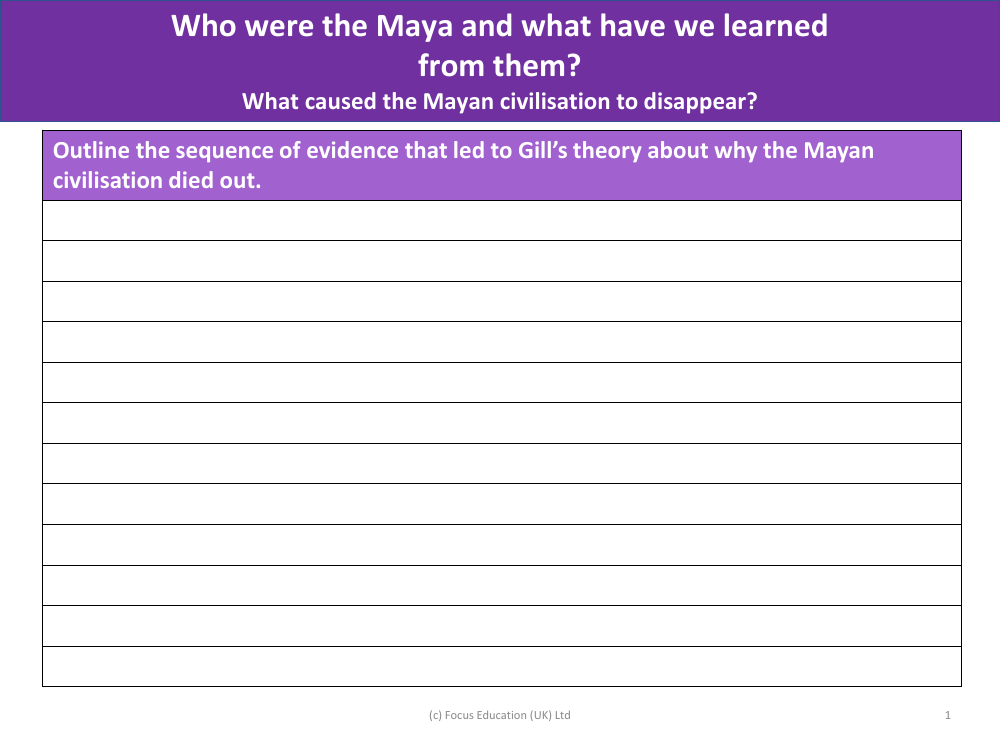Outline the sequence of evidence that led to Gill's theory about why the Maya civilisation died out - Worksheet

History Resource Description
The sequence of evidence that led to Gill's theory about the decline of the Maya civilisation began with a thorough investigation into both historical records and environmental data. Initially, researchers studied the artefacts, architecture, and written records left by the Maya to gain insight into their culture and achievements. These findings confirmed that the Maya were a highly advanced civilisation with a deep understanding of astronomy, mathematics, and agriculture, which they integrated into their daily lives and monumental constructions such as pyramids and temples.
Further evidence emerged from palaeoclimatological research, which involved the analysis of geological and biological data, such as sediment cores from lakes and ice caps. This data suggested that the region experienced significant climatic changes during the period when the Maya civilisation began to wane. The evidence pointed towards a series of prolonged droughts, which would have severely impacted the Maya's ability to sustain their large populations, agriculture, and city-states. Gill's theory posits that these environmental stressors, particularly the droughts, played a pivotal role in the collapse of the Maya civilisation by undermining its agricultural base and destabilising its complex societal structures.





